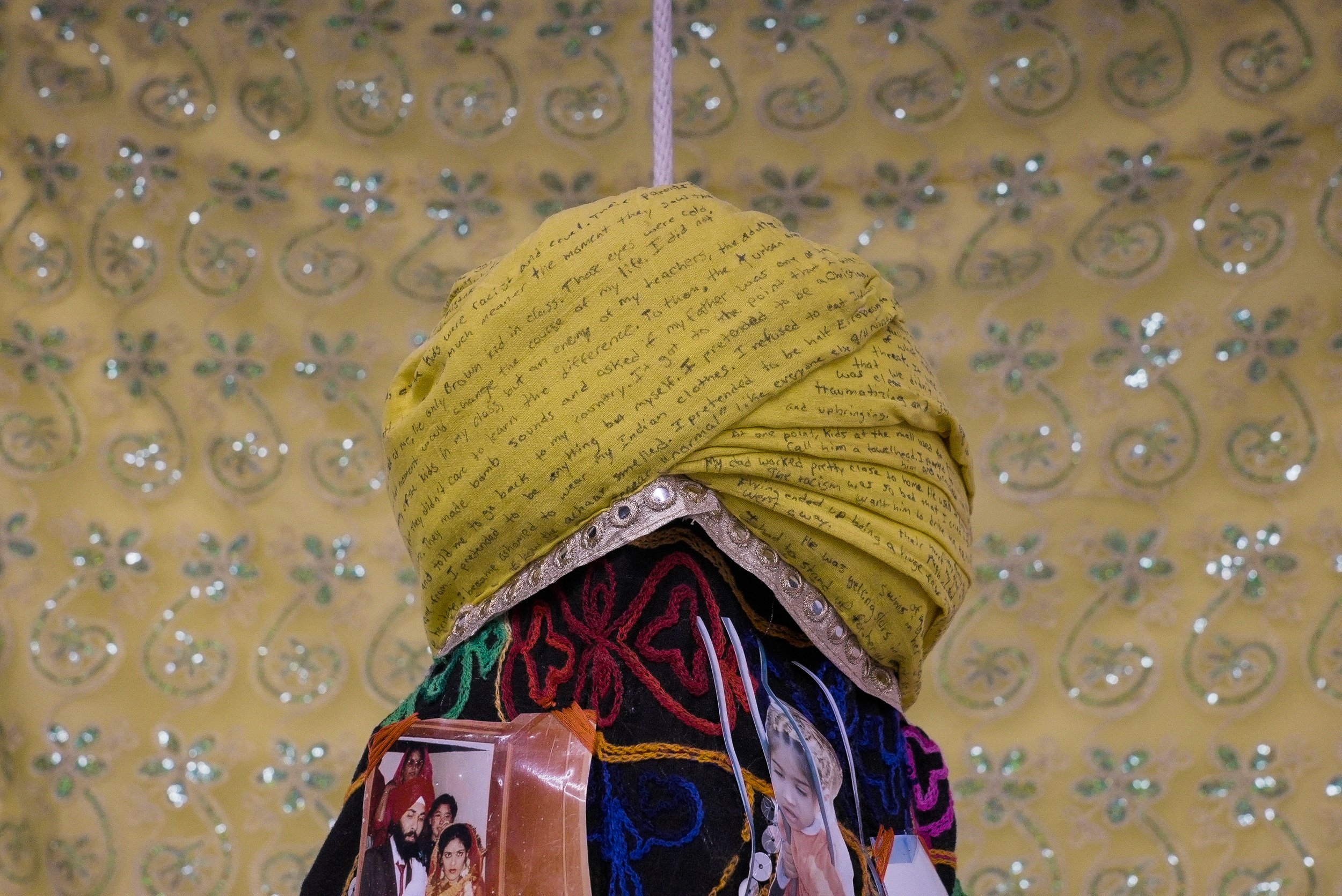Udasi
Artist: Ravjot Mehek Singh
Title: Udasi
Medium: sculpture using fabrics and photographs
Udasi has a dual meaning in Punjabi and in Sikhi. Udasi not only means journey, but it also literally translates to the word sadness. For the subject of immigration, in many ways, it could not be more beautifully and truthfully put. Udasi. The feeling of leaving your family and friends behind. The feeling of leaving your home, the streets that you grew up on, the food from the corner cart you got every day, leaving behind your school, your clothes, your childhood notebooks. Then eventually the Udasi that comes from leaving your culture behind, slowly forgetting words you once spoke so fluently but now have no one to practice with in a new foreign nation where you are viewed as the foreign one.
In many ways, any immigrant goes through an Udasi in both senses of the term. The journey is sad in its very essence of leaving behind what lands and languages and loved ones created you and trying to find your footing in a new, strange place.
To represent the Udasi of my family, which is very complex at its core, this piece features my father’s pagh (Sikh turban) with stories of hate fueled, xenophobic encounters I have experienced as a child of immigrants in post 9/11 America. Each fold of the fabric of the turban contains its own story of struggle and isolation that American ignorance attacked my family and I with. Attached to the turban is my mother’s “chunni” or decorative headscarf worn by Sikh women inside temples. In this chunni, there are photos depicting my parents’ move to America and the struggle that became less and less as we became more integrated into American culture, though that came at a loss of our traditions, creating a collage using the embroidered, traditional fabric. The turban and chunni come together to create a genderless entity, tall and proud like the Punjabi people. The mixture of traditional Sikh femininity and masculinity in this piece proudly displays the religion’s roots in equality of all genders and how Waheguru (God) is a genderless being above the human constructs of gender. The rope that holds up the religious turban and chunni represents the incredible struggle of the Sikh people, with its imagery being reminiscent of how Sikh families were slaughtered and hung in the 1984 Sikh genocide in Delhi, which my mother survived thanks to a Hindu neighbor hiding her family in their homes as Hindu nationalist mobs went door to door hunting for Sikhs. Within these fabrics, archival photographs, and written memories of our struggle lies our Udasi.





